Antifreeze or coolant is a key component in keeping your engine cool and preventing overheating. Checking your coolant regularly is a great way to catch problems early and add more antifreeze to your vehicle when needed. To help you add the correct antifreeze to your car safely, we researched this topic to provide an in-depth answer.
To add antifreeze to your car, follow these steps:
- Turn the engine off and cool down the car
- Locate the engine coolant reservoir
- Check coolant levels
- Twist off the coolant cap properly
- Add the coolant
- Reach the cold fill line and put the cap back on
Please keep reading. We'll discuss using modern antifreeze types, whether to add it to a cold or hot engine, and suggest the best antifreeze for your engine. We've also covered some other commonly asked questions about how to replace antifreeze in your car.
![Person pouring car coolant in a car engine, How to Add Antifreeze To Your Vehicle [6 Crucial Steps]](https://vehq.com/wp-content/uploads/2020/10/How-to-Add-Antifreeze-To-Your-Vehicle-6-Crucial-Steps.jpg)
Antifreeze (Or Coolant) Is Essential For Your Car
Antifreeze, or rather an engine coolant, is an essential liquid for any car or truck. Yes, water may help, but it does not work as effectively as antifreeze. However, it is not about just adding the antifreeze. Its effectiveness is mainly dependent on how you add it, and which type you choose to put in your car. So, before we break down the steps of adding antifreeze, do you have the right one?
Determine the Correct Antifreeze For Your Make/Model
Purchasing the correct coolant is a wise move to take care of your car. Do not purchase any coolant without first doing your research. Start by reading your owner's manual and visiting the manufacturer's website to determine how the product works. This will help you know whether the antifreeze you are about to get will work well with your car.
Visit the nearest dealership for your car's manufacturer. The dealer should have the right coolant for your specific make and model. It is the easiest path to keep your engine safe and choosing the correct antifreeze. For instance, BMW and Volkswagen will always have coolants for different models in their stores. Honda also sells Type 2 antifreeze in its dealerships. So, be sure to check them if you drive these cars.
Types Of Antifreeze (And Ingredients)
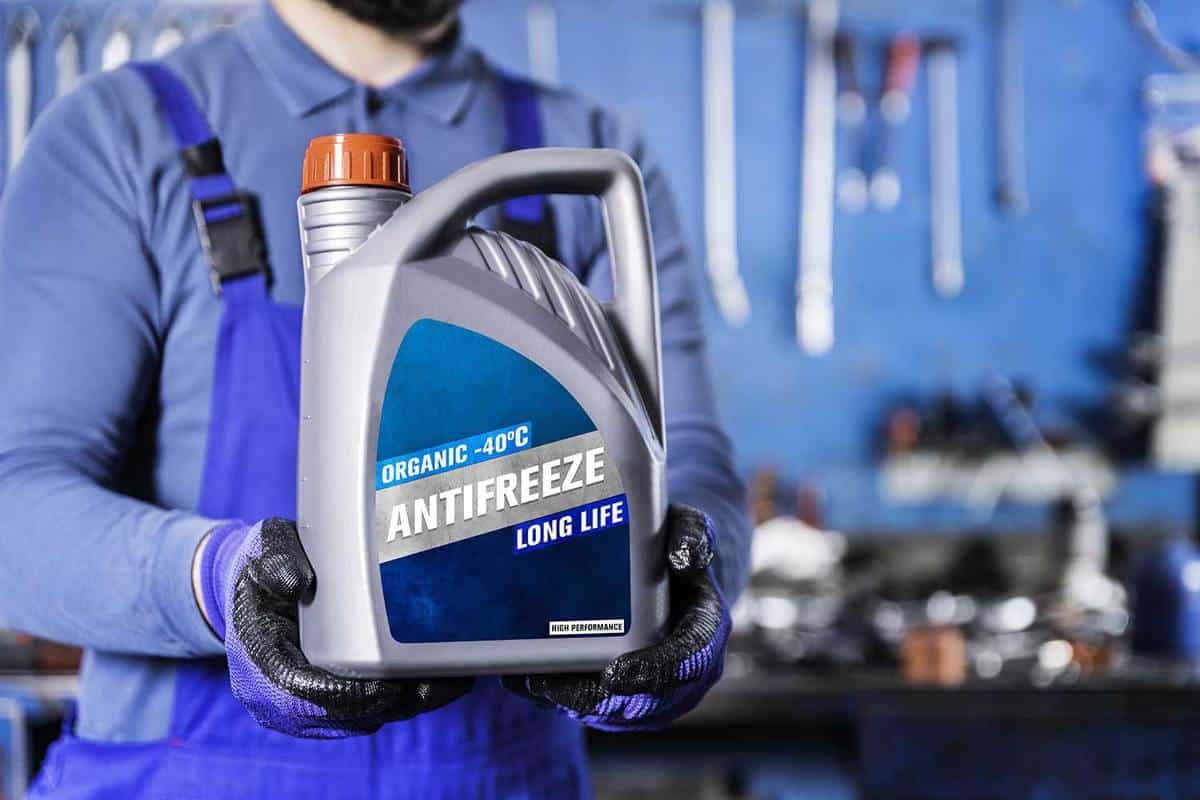
Coolants come in all manner of colors and types. They also serve different purposes for different brands of cars. This makes it imperative to find a coolant that is compatible with your car's engine. Here are the different types of coolants that can help you decide what suits your car best.
Inorganic Additive Technology
This coolant usually comes in the color green. It is manufactured using ethylene glycol, with phosphates and silicate. These ingredients are excellent in preventing engine corrosion. Inorganic additive technology does not work as efficiently as some of the newer brands in removing debris. Therefore, if you use inorganic additive technology, be sure to clear the reservoir entirely before refilling it.
Organic Acid Technology
Organic Acid Technology is made using propylene glycol. This type of coolant is usually an orange color. If you have a Volkswagen, Saab, or GM, this organic acid technology would be your best bet. However, it is always wise to consult your car's manual before adding any coolant to your cooling reservoir.
Hybrid Organic Acid Technology
Hybrid Organic Acid Technology is usually yellow. However, some brands have this in yellow, pink, blue, and orange. It is made using organic acid and silicates, making it excellent for engine corrosion prevention. These are excellent for most Ford models, European cars, and Chryslers. This type of antifreeze has the most variety, with three versions that are best for certain types of cars.
Phosphate-Free Hybrid Organic Acid Technology
This type of coolant known as HOAT comes typically in turquoise. It is manufactured with glycol and has both organic and inorganic corrosion inhibitors. Other than corrosion prevention, phosphate-free HOAT is excellent in protecting your car's seals and gaskets. This type of coolant is typically compatible with brands like Mercedes, Audi, Jaguar, Saab, VW, Porsche, and Rolls-Royce.
Silicated Hybrid Organic Additive Technology
This type of coolant is typically bright purple. It contains silicates that are excellent in preventing corrosion in the engine. If you are looking for a coolant free from nitrates, borates, phosphates, amines, and imidazole, this is your sure bet. This coolant is compatible with Bentley, Audi VS, Mercedes Benz, and Lamborghini.
Phosphated Hybrid Organic Additive Technology
Phosphated Hybrid Organic additive technology typically comes in either blue or pink, depending on the brand. It is manufactured using phosphates and carboxylates, which inhibits engine corrosion. This is your ideal antifreeze if you have a car that is manufactured in Asian countries. It works well in resolving heat transfer issues.
How To Add Antifreeze To Your Car
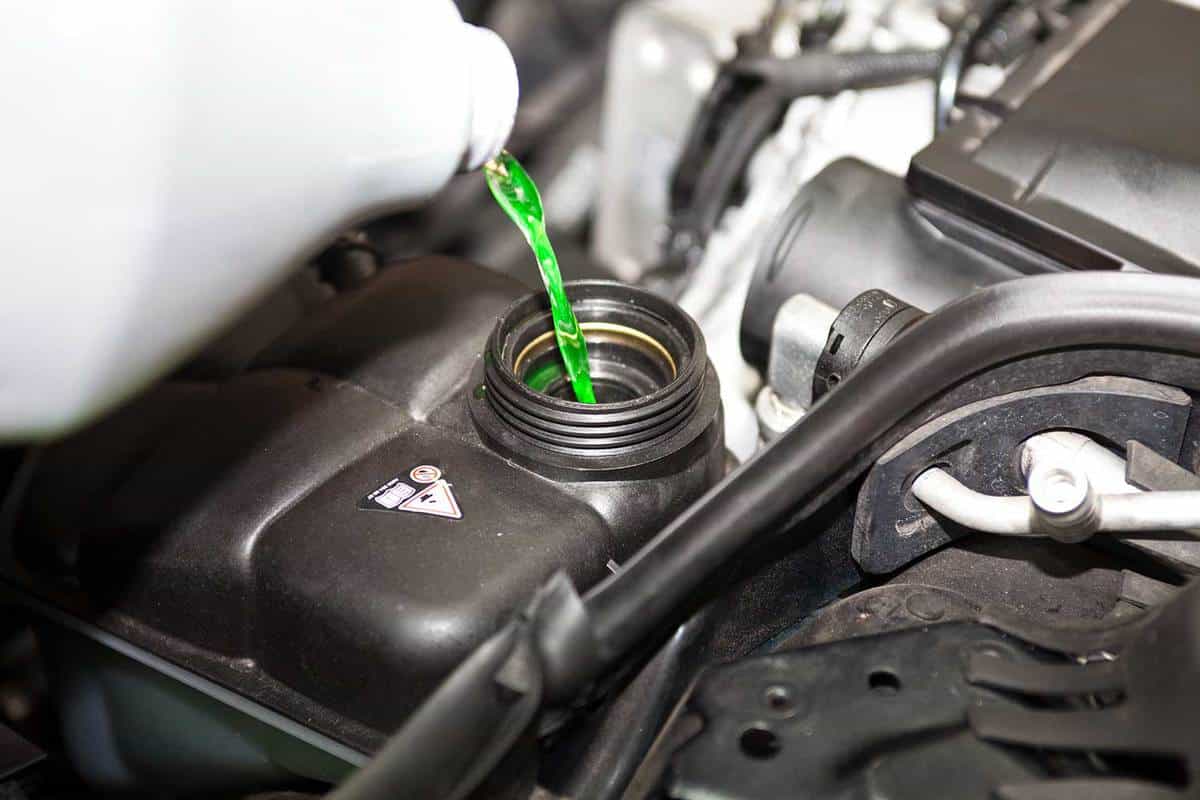
1. Turn the Engine Off and Cool the Car
You always want to turn off your car and let the engine cool down before you add antifreeze. It is safe to ensure the parking brake is set, and your car is on a flat surface. There are a few reasons why you want to cool down your car before adding antifreeze. First, engines get very hot, and you do not want to risk touching the wrong part to get burned. Also, the reservoir cap will be hot to the touch.
So, what do you do when the engine overheats and causes a breakdown? In this instance, you may be tempted to add antifreeze before the engine cools down. Rule of the thumb, let the engine cool down and wait patiently for at least 15 minutes before opening the cap. You may end up with engine damage if you do not wait. The sudden temperature change can cause catastrophic engine cracks. If you are in a hurry and decide to add a coolant when the engine is hot, know that you risk incurring extensive engine repair or replacement bills.
2. Locate the Engine Coolant Reservoir
Locating the coolant reservoir is pretty simple because it usually displays a colored lid. But a lot of people have trouble locating it. So, if you cannot locate yours, don't worry, you are not alone.
A lot of cars feature a reservoir lid in yellow. Many cars also have a warning symbol on the cap -not to open it when the engine is still hot or running. The reservoir is usually a thick, translucent plastic that gives the owner the chance to view the coolant while adding it.
What if I cannot locate the reservoir? Check your manufacturer's manual. The manual shows different parts under the hood of your car. If you cannot find your manufacturer's manual, plenty of resources have information about your car online. A great website to find virtual owner's manuals is on carmanuals.org.
3. Check Coolant Levels
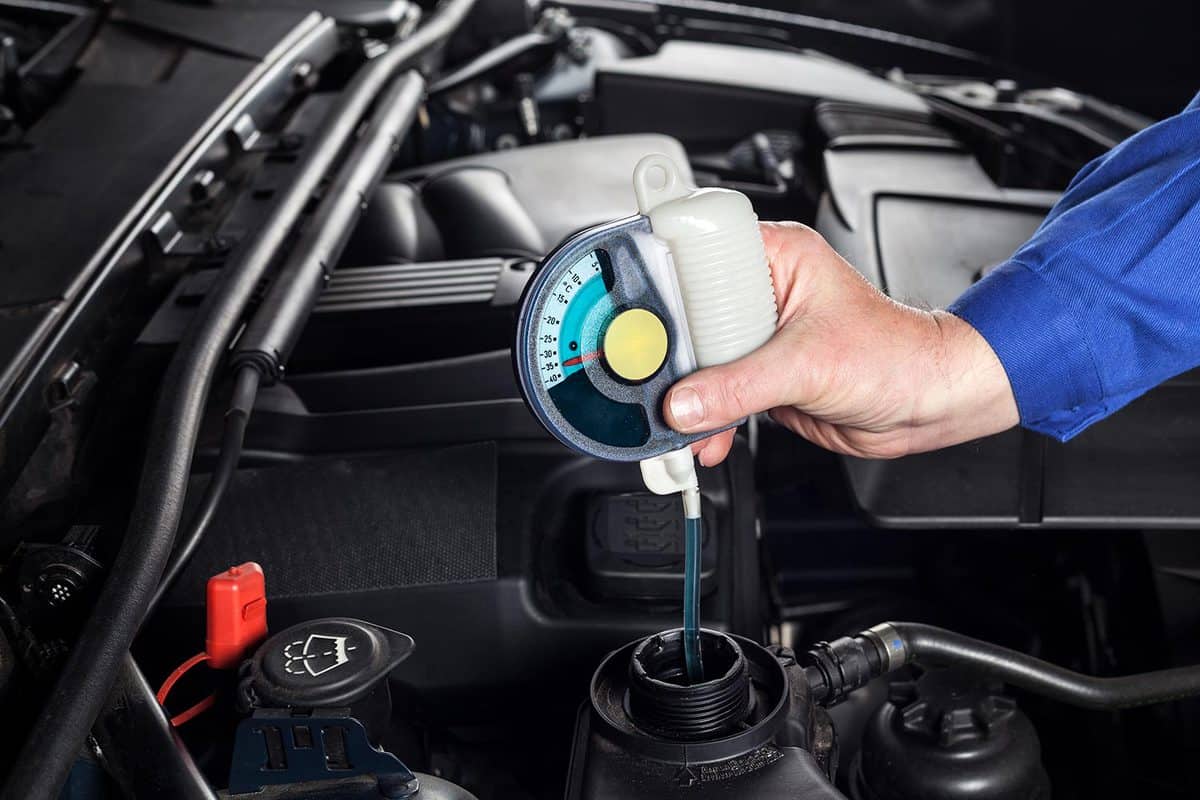
Checking the coolant levels is a process that only takes a glance at your coolant reservoir. When you locate the reservoir, check the coolant level against the maximum and minimum demarcation lines.
This is why the reservoir is transparent, and why the antifreeze liquids are so brightly colored -so that you can check the coolant levels in the reservoir with ease. You do not need to remove the cap to check the liquid level from the reservoir's sides.
If the coolant level is below the top line, you need to add a little bit of coolant to reach that point. If it's below the minimum level, it means you need to add some coolant to the maximum mark. After this, you need to monitor the level after a day or two.
If you have to top up a coolant after a day or two, this could be a sign of a leak. A crack or hole in the cooling reservoir could cause serious problems. Visit your mechanic if you are suspicious of a leak in your cooling system.
4. Twist off the Coolant Cap Properly
You should unscrew the cap and fasten it back carefully. A defective cap can primarily affect the effectiveness of your cooling system. Remove it carefully; you don't want it damaged.
5. Add the Coolant
Here is the step you have been waiting for! You can add some water to concentrated coolants, but please follow the instructions carefully. Do not add water to coolants labeled 'ready to use.' Use a funnel to avoid any spillage while you are adding the antifreeze to your car's reservoir.
6. Reach the Cold Fill Line and Put the Cap Back
Once you hit the maximum or cold fill line, it's time to replace the cap. Ensure you fasten it tightly. If not, there may be a severe leak due to the pressurized system. That is it! Check out the video tutorial below to see these steps in action.
If you suspect a leak in your system, check it regularly to ensure it is not running low. Coolant is constantly reused, so you should not be running low often.
Does the Car Need to be Running When Adding Antifreeze?
Your car does not need to be running for you to add the coolant. However, there are some cases when a running car is alright, and you can add coolant. This is typically the case with a newer car model. Remember for your safety that the engine of a running car will be scorching!
You must not remove the radiator cap and add the coolant to the expansion tank under the hood. As long as the engine is not too hot, you can add your coolant. Just ensure the reservoir is warm. A too-hot one can be catastrophic to the engine.
What Happens If I Put Too Much Antifreeze In My Car?
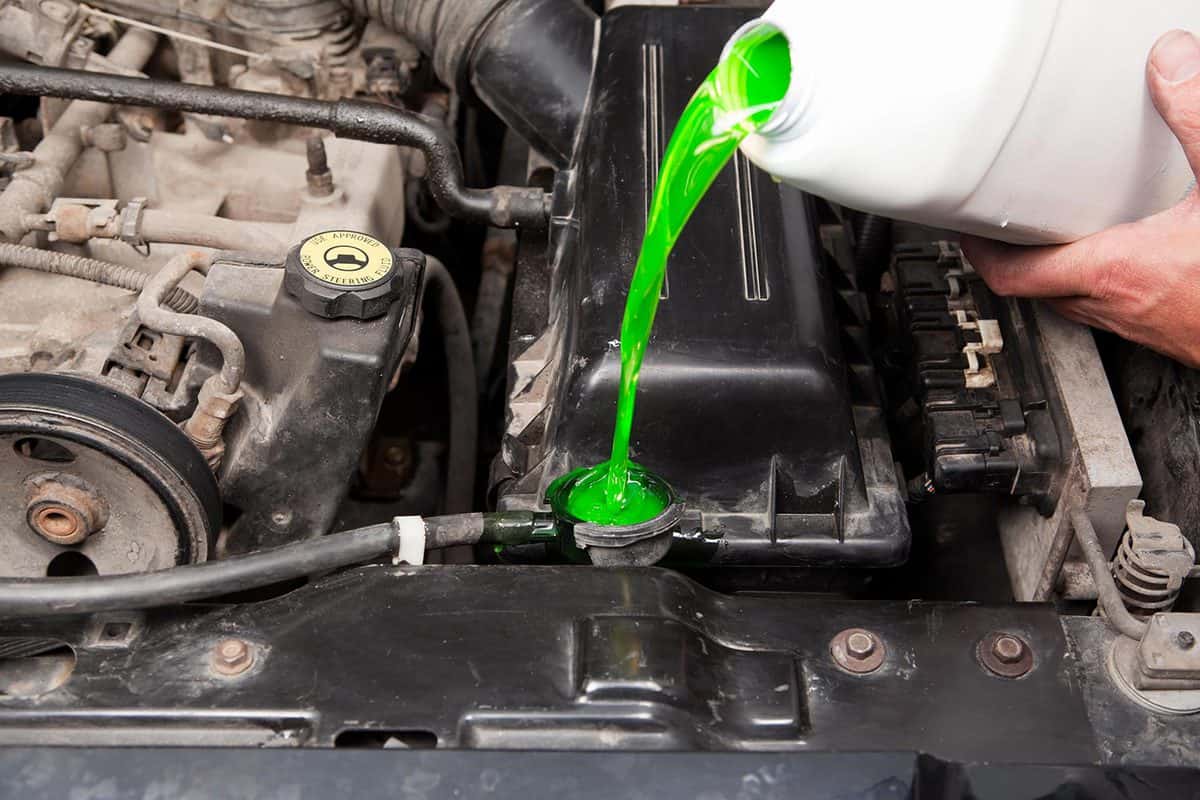
The reservoir is designed to hold a specific amount of coolant. If you put too much past the maximum mark, it will be expelled through a hose. You may notice the liquid under your car after filling the reservoir. At worst, an overflowing tank can result in electrical damage because the overflow comes into contact with the engine's wiring. Therefore, you want to be careful not to go past the maximum mark.
Why Is My Coolant Low But No Leaks?
If you need to top up your coolant after a day or two, your first guess should be a leak. But what if there is no leak? What could be the problem? Some of the reasons your coolant could be disappearing quickly are a sudden change in driving styles, a poorly maintained coolant system, or defective engine components.
Some of the defective parts in your system potentially causing coolant loss include a broken cylinder head, a manifold leak, destroyed cylinder bores, or a blown head gasket. All these can be fixed by your local mechanic.
Is It Ok To Add New Coolant Without Draining The Old?
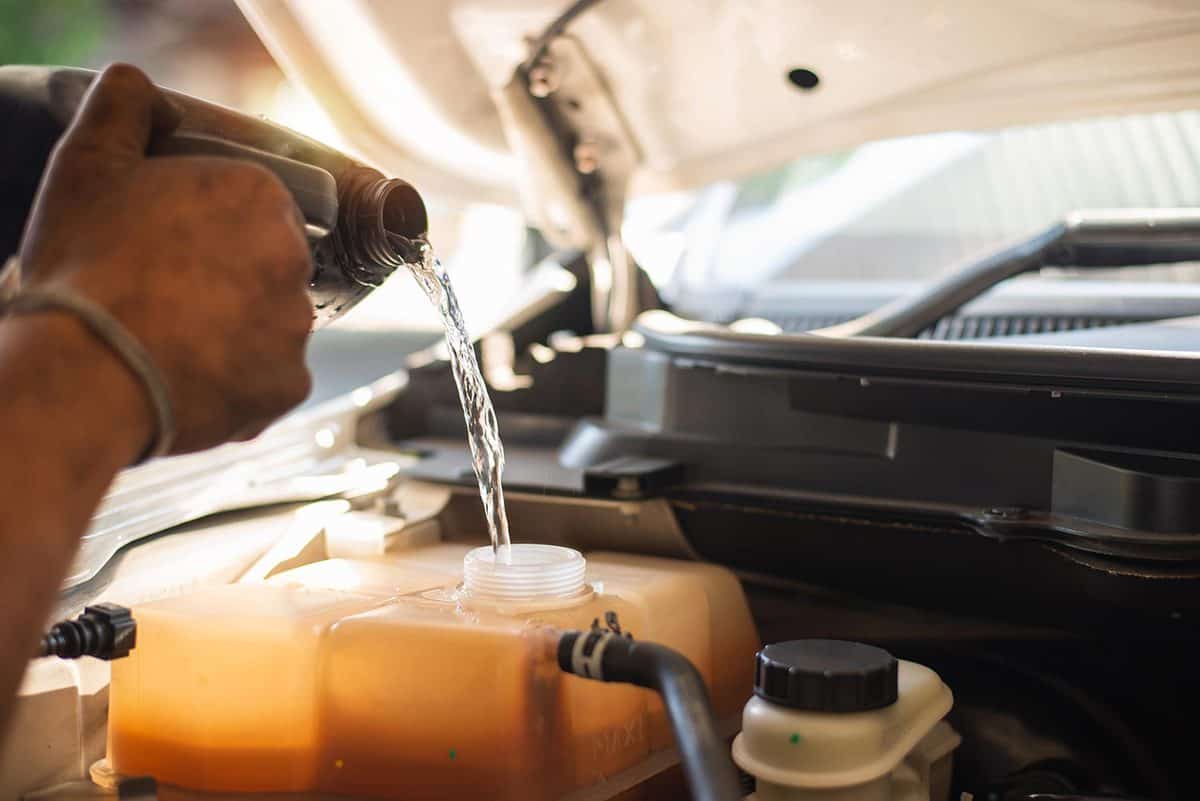
There is no problem with just topping up the coolant. You can add the coolant without flushing out the old. However, with time, the older coolant becomes acidic. This can cause corrosion, and afterward, can cause defects in the cooling system. It's recommended by most manufacturers that you replace the coolant after every 30,000 miles.
Should My Coolant Reservoir Always be Full?
No, the reservoir should not always be full. But it is good to have it more than 50% full at all times. It is recommended that you have it no lower than 30% full when the engine is off. This will keep your engine in perfect condition and avoid any damage from the low coolant.
Conclusion
Car engines are very complicated systems with several moving parts. Engines perform many activities, which causes the engine to build up with heat -exactly why you need antifreeze. To prevent the engine from overheating and maintain it properly, you now know how to add antifreeze to your coolant reservoir and check the coolant levels.
